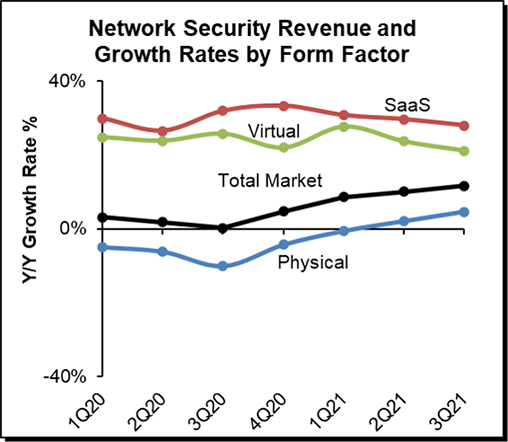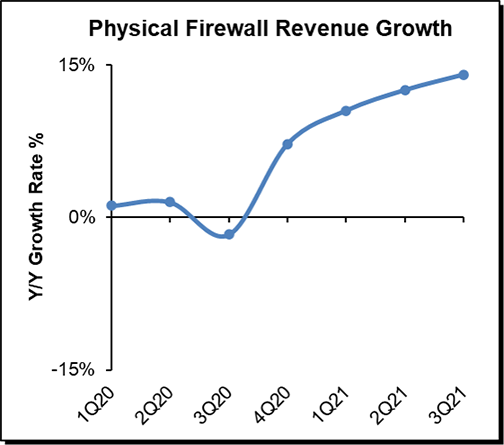As pandemic-related headwinds started to ease, we were optimistic for a return to higher growth on data center infrastructure spending in 2021. The Cloud was entering an expansion cycle and demand signals in the Enterprise were gaining momentum. While data center capex grew 9% in 2021, which was in line with our prior projections, growth was mainly driven by higher cost of data center equipment, rather than by unit volume. Server unit growth, which was flat for the year, was constrained by component shortages and long lead times. Deliveries for networking and physical infrastructure equipment are also facing a mounting backlog. Furthermore, higher supply chain costs, from increased commodity, expedite, and logistics costs led to higher system prices. Our 2022 outlook is more optimistic, with a data center capex projection of 17%, accompanied by double-digit growth in server unit shipments. We identify the following key trends that could shape the dynamics of data center capex in 2022.
Hyperscale Cloud on Expansion Cycle
The Top 4 Cloud service providers—Amazon, Google, Meta (formerly Facebook), and Microsoft—are expected to increase data center capex by over 30% in 2022. Investments will go towards the replacement of aged servers, increased deployment of accelerated computing, as well as servers for new data centers in more than 30 regions that are scheduled to launch in 2022. Furthermore, infrastructure planned last year that was not deployed due to extended equipment lead-times have resulted in additional tailwind growth as deliveries are fulfilled in 2022.
Supply Chain Stabilizing
Generally, the major Cloud service providers have weathered through this tough supply chain climate better than the rest of the market given their strong visibility in their demand and can proactively increase inventory levels of crucial components and build redundancies in their supply chains. On the other hand, data center capex growth in Tier 2 and 3 Cloud service providers and Enterprise have been supply-constrained. There is some consensus that the level of supply chain disruptions is starting to stabilize and possibly ease by the second half of 2022. Lead-time for servers could improve sooner than other data center equipment such as networking, given their relatively larger scale and lower product mix.
Metaverse Could Drive Opportunities In AI Infrastructure
Some of the major Cloud service providers, such as Apple, Meta, Microsoft, and Tencent, have announced plans to enrich their metaverse offerings for both enterprise and consumer applications. This would require increased investments in new infrastructures, such as servers with accelerated co-processors, low-latency networking, and enhanced thermal management solutions. Chip manufacturers and major Cloud service providers will be developing specialized processors for AI applications. The ecosystem would need to evolve to enable the community of AI application developers to broaden the reach of AI into enterprises. AI infrastructure is costly and will be a major capex driver. For instance, we estimate that the cost of AI infrastructure is largely responsible for Meta’s plans to increase capex by approximately 60% this year.
New Server Architectures On The Horizon
Intel is releasing a new processor platform, Sapphire Rapids, later this year. Sapphire Rapids will feature the latest in server interconnect technologies, such as PCIe 5, DDR5, and more importantly, CXL. These new high-speed interfaces could alleviate system bandwidth constraints, enabling more processor cores and memory to be packaged into a single server. CXL would enable memory sharing between the CPU and other co-processors within the server and rack, enabling data-intensive applications such as AI to access memory more efficiently and at lower latencies. AMD and ARM will also incorporate these new interfaces within their processor platforms as well. We expect these enhancements could kick off a multi-year journey of new server architecture developments.
Let’s Not Forget About Server Connectivity
Last but not least on this list, server connectivity will also need to evolve continuously and not clog the connection between server and the rest of the network. The hyperscale Cloud service providers have been deploying in production the latest generation network interface cards (NICs) based on 56 Gbps PAM-4 SerDes of up to 100 Gbps for general purpose workloads, and up to 200 Gbps for advanced workloads such as AI. The Enterprise is fully embracing 25 Gbps NICs, and we anticipate the number of 25 Gbps ports to overtake that of 10 Gbps later this year. Smart NICs, or data processing units (DPUs) are being deployed by the major Cloud service providers across their infrastructure to improve server utilization, and to accelerate latency-sensitive applications such as AI. Outside of the hyperscale, Smart NIC adoption is still in its nascent stage. However, given that most of the network adapter vendors have a Smart NIC solution available in the market, enterprises potentially have a wide range of choices to fit their applications and budget.

